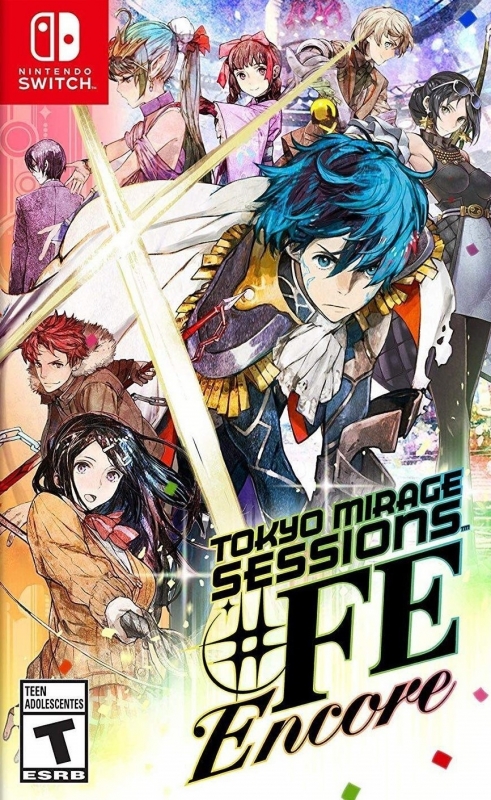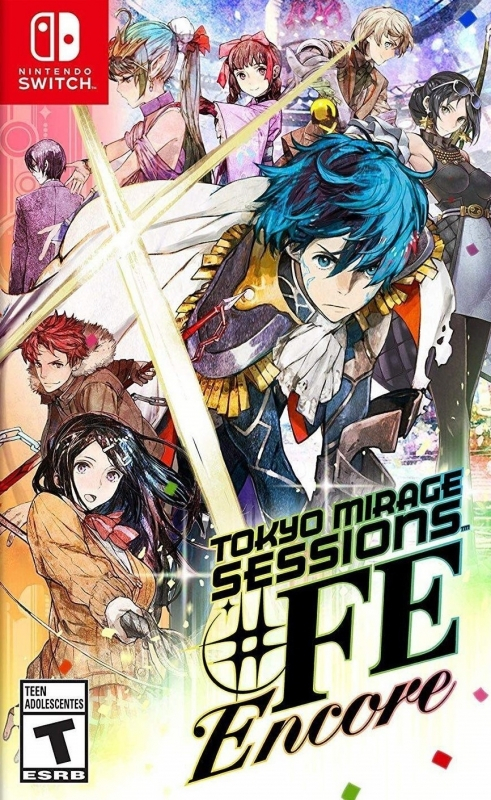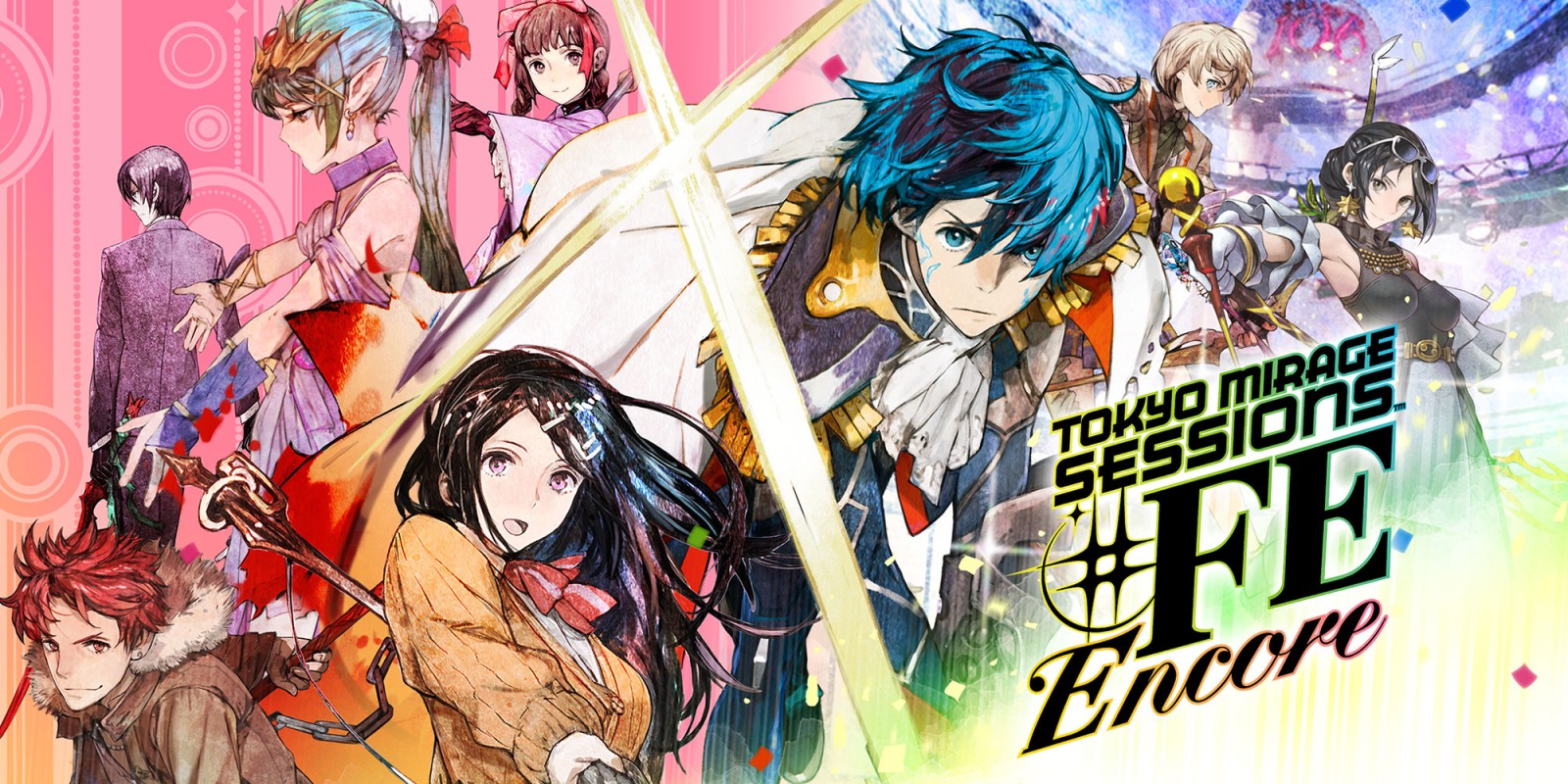Existing User Log In
New User Registration
Register for a free account to gain full access to the VGChartz Network and join our thriving community.





America - Front


America - Back

10th Aug 2022 | 2,677 views
Game: Tokyo Mirage Sessions #FE Encore
Platform: WiiU/NS
Year: 2016/2020
Developer: Atlus
Genre: JRPG

Crossovers are a risky thing. Combining two or more series into a singular game, movie, show or any other piece of media might sound like an obvious win-win at first. They share a combine fanbase, and maybe some of the fans of one series becomes a fan of the other one. In reality, crossovers are very delicate things, which need to walk a very treacherous road to successfully represent its combining franchises appropriately. You must have extensive knowledge of not only the franchises, but also what the fans expect from each one, and then represent them in a way that doesn’t make one immediately overshadow the other. This has been done well many times, with examples like Super Smash Brothers becoming more successful than some of the series that form it. However, from time to time, you get examples of crossovers that feel the need to add something extra; something that they think might help the game be more cohesive. And that element might just throw the entire project out the window. This is the case with Tokyo Mirage Sessions #FE Encore.
Tokyo Mirage Sessions #FE is a crossover between the JRPG series Fire Emblem and Shin Megami Tensei, developed by Atlus and released on the WiiU in 2015/2016. An updated re-release was launched in 2020 for the Nintendo Switch, which is the version I have played. The game puts you in the boots of a young team of artists trying to fight an invasion of supernatural entities called “mirages”, who feed on human’s talents and creative energy. Your team will have to fend them off by using friendly mirages and by advancing within the entertainment industry.
And that right there is the problem most people are going to have with this game. Because in all of their wisdom, either Atlus or Nintendo decided that the element that Fire Emblem and SMT needed to work together is… idols. Yes, two turn based JRPGs with themes of fantasy, war, spirituality and the human nature somehow need to be mixed with idol stuff to work together. I would love to have been a fly on the wall at the meeting when that brilliant idea was proposed. I’m willing to assume that everyone who has played both FE and SMT games probably has a rough idea of what a crossover between the two could work. Hell, they already have the SMT Devil Survivor series as a great middle ground between the gameplay of Fire Emblem and regular SMT titles. And I’m pretty sure that at no point idol stuff would have been a part of it. This decision alienated pretty much everyone, both in the Fire Emblem and in the SMT communities, and I cannot blame them. I myself was very skeptical of that choice, but to their credit, it worked as a great bait for me to actually get the game, since there must have been some logic behind the madness, right?
Well no. No there isn’t. Because this is not a FE/SMT game with idol elements in it. The idol stuff is front and center, to the point I barely see the Fire Emblem or SMT anywhere, aside from a couple of references. It reached a point where I was wondering if this game was some reskin of another game Atlus was going to can until Nintendo proposed the crossover, it is that bad. The story obsesses over idol stuf, with characters barely talking about anything else. The world seemingly revolves around the entertainment industry: the mirages feed of human creativity to survive, and the only way to defeat them is with the power of song, dance, acting… All of the main characters are working in the entertainment industry one way or another. Even the protagonist, which is a pretty much a blank slate with a touch of shonen protagonist, who doesn’t care about the entertainment industry and has no reason to ever join it, has to do it because it will help him train to fight the mirages.
But that is just the more immediate problem this game has. The other problem is its writing. It is generic and beyond predictable. You know who the villain is the moment you see him, and the game pretends its reveal is a twist. You know what the motivations and goals of the trouble rival are going to be and again, the game shows them as something shocking. The characterization of each of the protagonists is cookie cutter, which range from forgettable to creepy. The side characters are forgettable at best. And there is not that big of a cast, you don’t have so many people to write it dilutes the writers’ efforts, this should not be a problem. If you have played an animesque game, you are going to be bored by the story, since chances are you have already played something similar. The story also has a lot of problems transmitting urgency and the danger the mirages represent to the player. Mirages feed on creativity, and if they take enough, they will kill whoever they are parasitizing. And they have been known to kidnap dozens, even hundreds of people at once, not leaving any kind of trace. And yet life goes on. Strange incident where hundreds fall unconscious in the middle of a concert? A concert that is probably been recorded live and has a viewcount of tens of thousands? Once the mirage is defeated, nothing happens, everything goes on as if nothing had happened. It’s not just nobody remembers anything due to magical reasons, they remember something happening and falling unconscious, they just don’t care and continue the concert as it if all was well. The side characters that get kidnapped by mirages and later freed act as if that was just an annoyance, to continue to work in the entertainment industry. Hell, the authorities technically know there is something happening and attacking people, but the entertainment company the hero works for manages to convince them to look the other way. This is not an all powerful corporation with ties to the government, this is a show agency that has like a dozen artists at best working for them. Suspension of disbelief can make me accept the supernatural elements of the story, but not how the protagonists can convince the authorities that there’s nothing to see here, even when it should be painfully obvious something’s amiss. The attacks happen in very crowded areas! There are cameras everywhere! Someone must know!
But it’s not just the tone and characters that drag the story down. It’s also the pacing and the lost opportunities the game has. The best example I can think of is Tubasa’s sister (don’t worry about spoilers, this happens very early on). It is established in the prologue that one of the protagonists had her sister disappeared years ago during a concert. From very early on you can see where this is going, since after knowing how the mechanics of the world work, obviously she’s going to appear eventually. The problem here is that, Tusbasa’s sister gets found and rescued by the end of Chapter 1. All that potential mystery and character development, albeit predictable, could have been nice to see throughout the game. Seeing Tsubasa struggle to find her, struggling to free her from the mirages and after all that setup getting the big reunion at last. Simple, but effective. But no, this is all resolved in a single chapter. And after that happens, Tubasa’s sister starts working for the entertainment agency as if nothing had happened. In reality, she disappeared nearly a decade ago. Considering she was a famous idol, her reappearance should shake the country, not to mention the entertainment industry, and would bring tons of media attention. Maybe she can somehow help the rest to track down whoever did this, or at least to find those who were kidnapped alongside her. But no, she just starts working as a secretary as if nothing had happened. Does anyone outside of the company know she’s back? She must have family that would be very grateful to see her again. But no, again, they do nothing with this. Hell, after the tearful reunion, Tsubasa only has one single meaningful interaction with her sister, and it’s not even her, it’s a mirage disguised as her.
You might think I’m focusing too much on the story, but this kind of JRPGs live and die by their story. And this one is below average, which is shocking to me, since this had the potential to draw elements from FE and SMT into a great narrative. Instead we got a mediocre animesque plot that anyone who has played a JRPG before can predict (especially if you’ve played Persona-like games). At the very least its’ short, if you don’t really care about the side stories, the game can be completed very easily. Though you will want to do as many side stories as you can, since they have a considerable effect over the gameplay.
The gameplay is pretty solid, and by far the strongest part of the game. It plays like Shin Megami Tensei titles, but with added elements from Fire Emblem, like the weapon triangle or class promotion. The key in gameplay is to chain as many attacks as possible, organizing the affinities of the characters so that, once you hit an enemy weakness, the rest of your team will attack alongside you, doubling or tripling the damage done. This is invaluable as you progress in the game, and it will become the basis for your strategies. You can also get special attacks that appear at random and need the collaboration of two characters to cause a special effect, which not only can turn the tide of the battle by healing everyone, but also restarts the combo chain, doubling the already significant damaged caused. To optimize these combos, you will need to access the characters’ sidestories, which suffer from the same problems the story does, and you need to play a certain amount of battles with them to unlock the sidestories. This means unlocking every power before the final boss will force you to spend quite a lot of time grinding with all the characters. Though, since you can use the characters who aren’t in your party to create combo chains, it at least incentivizes you to not just grind with the three protagonists you get at the beginning. You will have seven characters to play with, which is not much, but at least they are fairly balanced. You will find them useful in almost every situation, at least if you manage your skills right and don’t specialize too much. However, the dependence on these combos can make the combat repetitive. Once you know the enemy’s weakness, it’s just a matter of time before they are down by overwhelming attacks. The game also solves the problem of grinding in a neat way, giving you access very early on to a special area where you can increase the level of your characters at blinding speed. This completely nullifies the need for any grinding outside of getting materials to build equipment and abilities, but it can also be abused and take away all the difficulty in the game. The game is not that long anyway, just a prologue and six chapters, you can breeze it if you know what you are doing.
The design of the world and the artstyle are a mixed bag. On one hand, the game is colorful and energetic, which is a nice thing to see. The design of the monsters are creative, though they don’t really mix SMT and FE well, the beast monsters are very reminiscent of SMT, whereas the more humanoid critters are very FE. The character design looks something out of modern Final Fantasy than the simpler and austere SMT or FE designs (and Itsuki’s Marth mode looks ridiculous, he looks like he’s wearing a super saiyan wig). The dungeons, however, are small and very simplistic, with just a couple of elements mixed together to create a surreal landscape tailored to the plot. The overworld is very small, to the point that I wonder why some areas were done in the first place (why did they bother with the classroom studio?). There near zero exploration, and outside of the characters’ sidestories and the side characters missions, there is nothing to do. I guess you could try and complete the achievement board, but it would require more patience that I had. There’s also the chance for a New Game +, which carries over most of the stuff from the original game.
Another thing I’d like to point out is that, for a game centered around idols and musical stuff, the songs are pretty forgettable. The cutscenes where they sing and dance are nicely done, but the songs themselves are forgettable. Though, that might just be my tastes.
Overall, Tokyo Mirage Sessions ♯FE is a very disappointing experience. I was not kidding when I said I thought this was just a game Atlus reskinned as a Fire Emblem/Shin Megami Tensei crossover. It feels cheap and way below standards of both Atlus and Nintendo. The choice of making it an idol-centric game takes away a lot of the potential of the game, but even beyond that, lack of side content and terrible writing drag this game way down.
Score: 4/10